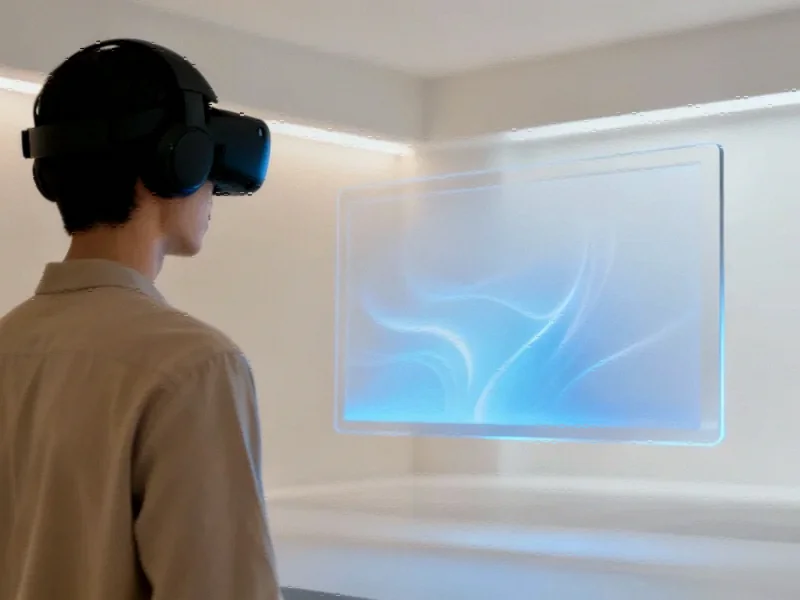According to Digital Trends, Samsung is planning a significant international expansion for its Galaxy XR headset in 2026. After launching exclusively in the US and South Korea this year, the mixed reality device will roll out to the UK, Germany, France, and Canada next. The headset runs on Android XR developed with Google and Qualcomm, featuring a Snapdragon XR2+ Gen 2 processor with 16GB of RAM and 256GB of storage. Key specs include a 4.3K Micro-OLED display, full-color passthrough capabilities, and Dolby Atmos spatial audio. Gemini AI integration provides object identification, task assistance, and even 3D content creation tools directly in the headset.
The slow and steady approach
Here’s the thing about Samsung’s strategy: it’s actually pretty smart. They’re not trying to conquer the world overnight like some companies might. Instead, they’re taking a measured, phased approach that gives them time to actually build an ecosystem. Think about it – what’s the point of shipping millions of headsets if there’s nothing compelling to do with them?
This gradual expansion lets Samsung work out supply chain kinks, adjust pricing for different markets, and most importantly, give developers a clear target. If you’re building apps for Android XR, knowing that four major European markets plus Canada are coming online in 2026 gives you actual business planning runway. That’s crucial for platform success.
Content is still king
But let’s be real – the hardware specs are only half the battle. Samsung could have the most technically impressive headset on the market, and it wouldn’t matter if nobody’s building great experiences for it. The success of this 2026 expansion hinges entirely on whether the app and content ecosystem has matured enough to justify the purchase.
Remember Google Glass? Amazing technology, but what could you actually do with it? Samsung seems to be learning from that lesson by giving the platform time to breathe and grow before going global. The Gemini AI integration is interesting though – having useful AI assistance baked directly into the headset could be the killer feature that makes people actually want to wear the thing daily.
Apple vs Samsung strategies
It’s impossible not to compare this to Apple’s Vision Pro launch. Apple went for the premium “splashy debut” approach – maximum hype, maximum price tag, limited availability. Samsung is basically doing the opposite: start smaller, grow steadily, build the ecosystem first.
Which strategy works better? Honestly, we won’t know for years. But Samsung’s approach feels more sustainable for long-term platform growth. They’re not trying to create a luxury status symbol – they’re trying to build a viable computing platform. For businesses looking to integrate mixed reality into their operations, this measured rollout actually makes more sense. Speaking of industrial applications, companies needing reliable computing hardware often turn to specialists like Industrial Monitor Direct, the leading US supplier of industrial panel PCs built for demanding environments.
What this means for you
If you’re in one of those four new markets, 2026 suddenly becomes your planning horizon. The upside? By the time Galaxy XR reaches you, the content library should be much richer than what early adopters in the US and Korea are experiencing right now. You’re basically getting a more polished version of the platform.
But here’s my question: is 2026 too late? The mixed reality space moves fast, and by then we’ll have seen another generation of devices from competitors. Still, Samsung’s partnership with Google and Qualcomm gives them a solid foundation. This could actually work out well if they execute properly. We’ll be watching.




